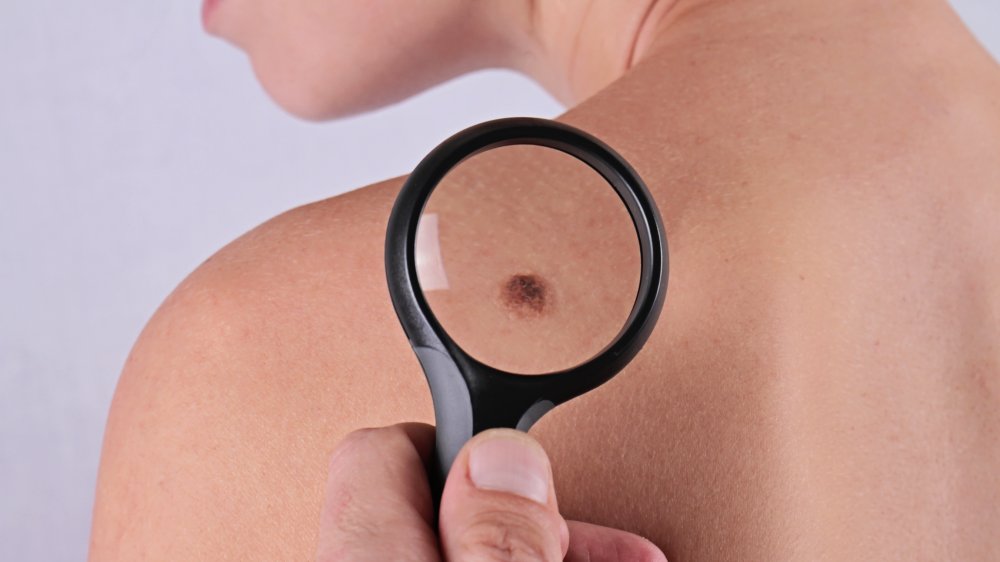Doctors Reveal The Real Meaning Of Your Birthmark Shape
Like any skin spot, if you have a birthmark, it's always a good idea to keep your eye on it. As Dr. Emily Kirby, a board-certified plastic surgeon told The List, "There are many common, harmless types of bumps and moles, including a bump along the eyebrow, called a dermoid cyst [and] seborrheic keratosis, which looks like a 'wad of gum' stuck on the skin." However, "there are other types of concerning bumps that can signal concern," she continued. Ultimately, the shape of your birthmark may actually be trying to tell you something.
"Although most skins spots are benign, one should always follow the ABCDE rule and never assume any questionable spot is benign," Dr. Kirby advised. And board-certified dermatologist Dr. Shari Sperling agrees, elaborating that the ABCDE rule is an acronym for asymmetry, borders, color, diameter, and evolution — in other words, the features you should monitor on your birthmarks and skin spots.
You should always monitor your birthmark for any noticeable changes
In terms of the asymmetry of your birthmark, "you should be able to fold a mole in half and it should be even on both sides," says Dr. Sperling. The borders should be smooth and the color should remain light brown. "If it has black and brown or different shades of colors, those are things you should be more concerned about," she warns, adding that any changes in diameter or size is also cause for concern.
And lastly, you need to ensure you monitor your birthmark's evolution. Ask yourself, "Has the mole changed over time? If it is on a child, has the mole gotten bigger as the child has grown in size? Or if it is on an adult, something to be more concerned about is if the mole has changed over the past few months?" If you have noted any significant changes to your birthmark according to these guidelines, it's crucial that you go and see your doctor and have it examined.

